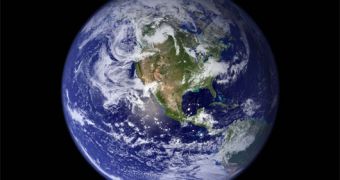A new paper published in the journal Proceedings of the National Academy of Sciences on September 16 sheds new light on the dynamics of the our planet's core.
In this study, researchers at the University of Leeds explain that, according to evidence at hand, the Earth's inner core, which is roughly the size of the Moon and made up of solid iron, spins eastwards.
The outer core, which is basically a layer of molten iron that surrounds the inner core, spins westwards.
What's interesting is that, by the looks of it, the inner core does not just spin.
On the contrary, scientists say that it “superrotates,” meaning that it rotates in an eastward direction significantly faster than the outer core moves westwards.
The University of Leeds researchers theorize that, all things considered, our planet's “insides” behave in this fairly peculiar manner due to forces generated by Earth's geomagnetic field.
Computer models pieced together by these scientists indicate that, as it pushes on our planet's inner core, the magnetic field makes it spin both faster and in an opposite direction than the rest of the Earth.
“The link is simply explained in terms of equal and opposite action,” says Dr. Philip Livermore, of the School of Earth and Environment at the University of Leeds, as cited by Science News.
“The magnetic field pushes eastwards on the inner core, causing it to spin faster than Earth, but it also pushes in the opposite direction in the liquid outer core, which creates a westward motion,” the researcher further details on his and his colleagues' findings.
The scientists maintain that their theory that the planet's geomagnetic field influences the dynamics of the Earth's core explains why previous investigations have documented fluctuations in the inner core's chiefly eastwards rotation.
It would also explain why archaeological evidence hints at the fact that, thousands of years ago, the inner core was the one spinning westwards and the outer core was the one spinning eastwards.
Thus, it is likely that these fluctuations were due to changes in the magnetic field.
“Subtle changes in the structure of the internal magnetic field may alter not just the magnitude but the direction of these torques.”
“This not only suggests that the quasi-oscillatory nature of inner-core superrotation may be driven by decadal changes in the magnetic field, but further that historical periods in which the field exhibited eastward drift were contemporaneous with a westward inner-core rotation,” the scientists write in the Abstract to their paper.

 14 DAY TRIAL //
14 DAY TRIAL //